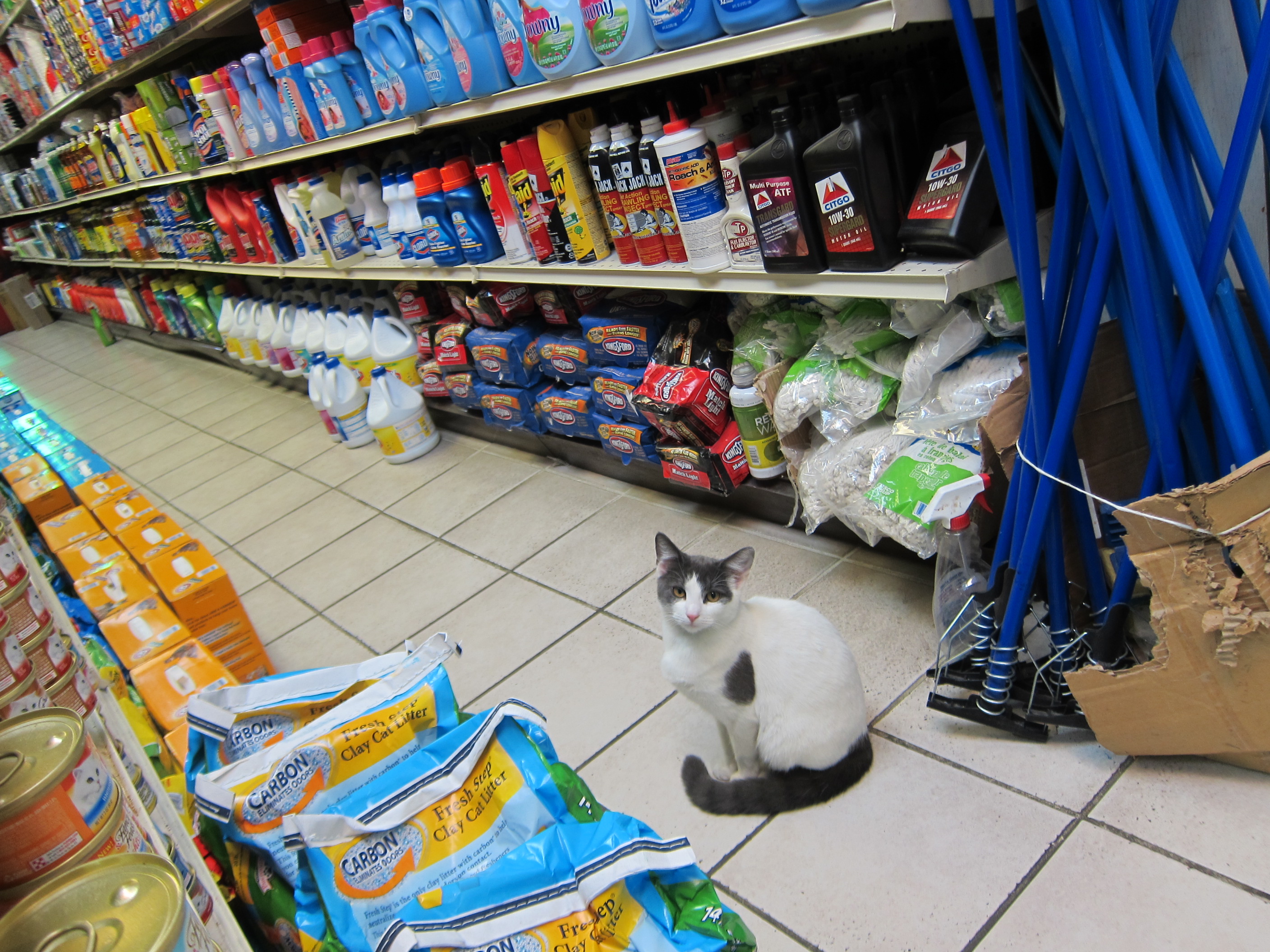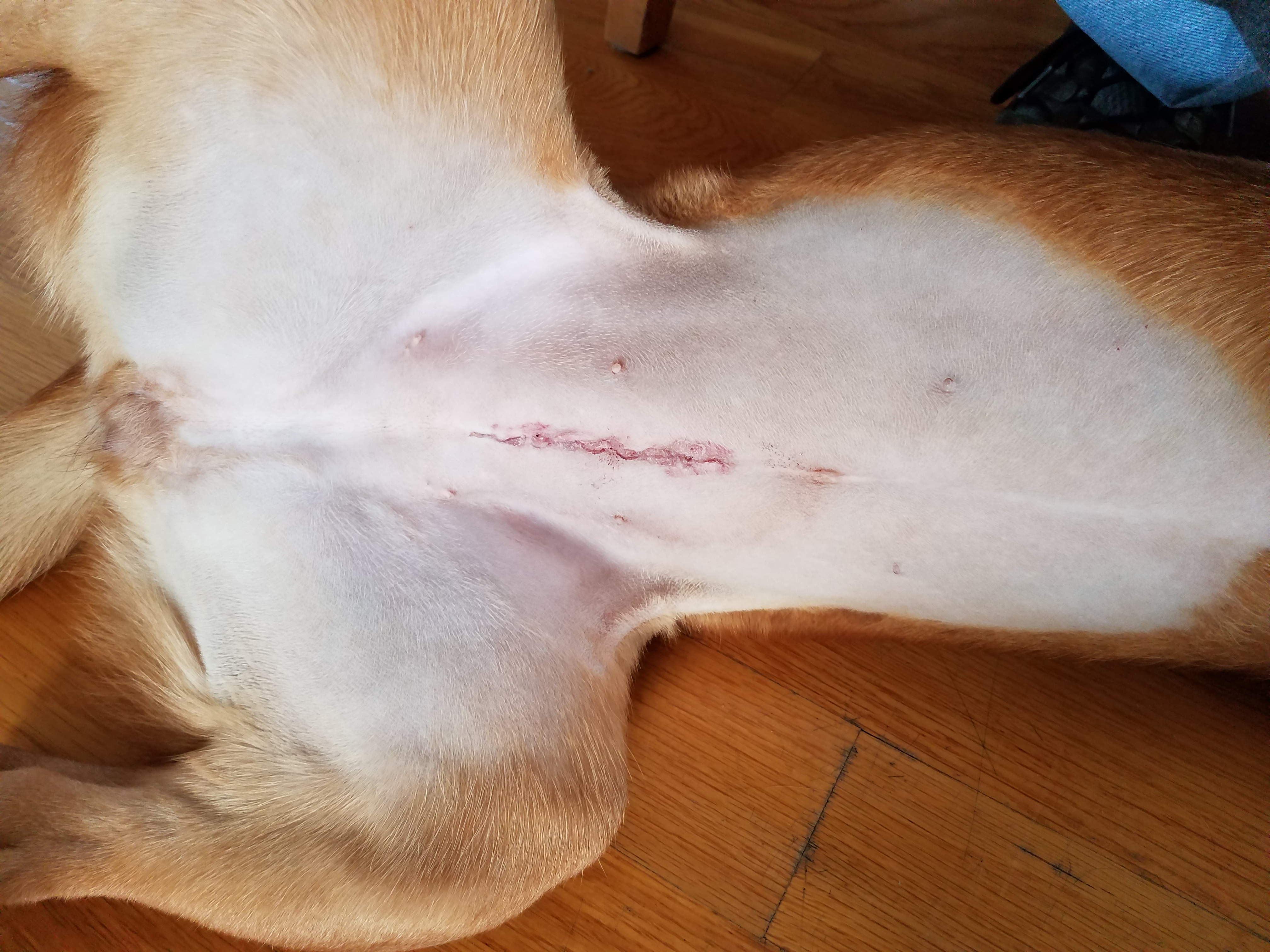|
Farm Cat
The farm cat, also known as a barn cat, is a domestic cat, usually of mixed breed, that lives primarily outdoors, in a feral or semi-feral condition on agricultural properties, usually sheltering in outbuildings. They eat assorted vermin such as rodents and other small animals that live in or around outbuildings and farm fields. The need for the farm cat may have been the original reason cats were domesticated, to keep rodents from consuming or contaminating grain crops stored for later human consumption. They are still commonly kept for their effectiveness at controlling undesired vermin found on farms, ranches, greenhouses, and even drug farms, which would otherwise eat or contaminate crops, especially grain or feed stocks. Farm cats hunt the initial rodent population, and their pheromones keep further rodents from filling the void. History Archeological evidence suggests that the earliest domestication of cats occurred about 7500 BC and was motivated by the human need to safe ... [...More Info...] [...Related Items...] OR: [Wikipedia] [Google] [Baidu] |
Feral Cat Virginia Crop
A feral () animal or plant is one that lives in the wild but is descended from domesticated individuals. As with an introduced species, the introduction of feral animals or plants to non-native regions may disrupt ecosystems and has, in some cases, contributed to extinction of indigenous species. The removal of feral species is a major focus of island restoration. Animals A feral animal is one that has escaped from a domestic or captive status and is living more or less as a wild animal, or one that is descended from such animals. Other definitions include animals that have changed from being domesticated to being wild, natural, or untamed. Some common examples of animals with feral populations are horses, dogs, goats, cats, rabbits, camels, and pigs. Zoologists generally exclude from the feral category animals that were genuinely wild before they escaped from captivity: neither lions escaped from a zoo nor the white-tailed eagles re-introduced to the UK are regarded as fera ... [...More Info...] [...Related Items...] OR: [Wikipedia] [Google] [Baidu] |
House Cat
The cat (''Felis catus'') is a domestic species of small carnivorous mammal. It is the only domesticated species in the family Felidae and is commonly referred to as the domestic cat or house cat to distinguish it from the wild members of the family. Cats are commonly kept as house pets but can also be farm cats or feral cats; the feral cat ranges freely and avoids human contact. Domestic cats are valued by humans for companionship and their ability to kill rodents. About 60 cat breeds are recognized by various cat registries. The cat is similar in anatomy to the other felid species: they have a strong flexible body, quick reflexes, sharp teeth, and retractable claws adapted to killing small prey. Their night vision and sense of smell are well developed. Cat communication includes vocalizations like meowing, purring, trilling, hissing, growling, and grunting as well as cat-specific body language. Although the cat is a social species, they are a solitary hunter. As ... [...More Info...] [...Related Items...] OR: [Wikipedia] [Google] [Baidu] |
Bodega Cat
A bodega cat (also referred to as a deli cat, store cat, or shop cat) is a type of working cat that inhabits a '' bodega'', which in New York City English refers to a convenience store or deli. Much like farm cats, library cats, and ship cats, a bodega cat is typically a mixed breed cat kept as a form of biological pest control to manage or prevent rodent infestations. A bodega cat may be a domesticated cat that is kept by the bodega owner, or a semi-feral cat that the bodega owner attracts to the store through regular feeding. Public health departments typically prohibit bodega cats under food codes that ban live animals from establishments where consumable goods are sold. Etymology The term is derived from ''bodega'', a Spanish word that translates to "storeroom" or "wine cellar". It is typically used in New York City to refer to a convenience store that sells groceries, deli meats, sandwiches, soft drinks, and other general staples. The term is commonly associated with ... [...More Info...] [...Related Items...] OR: [Wikipedia] [Google] [Baidu] |
Overpopulation (biology)
Overpopulation or overabundance is a phenomenon in which a species' population becomes larger than the carrying capacity of its environment. This may be caused by increased birth rates, lowered mortality rates, reduced predation or large scale migration, leading to an overabundant species and other animals in the ecosystem competing for food, space, and resources. The animals in an overpopulated area may then be forced to migrate to areas not typically inhabited, or die off without access to necessary resources. Judgements regarding overpopulation always involve both facts and values. Animals often are judged overpopulated when their numbers cause impacts that people find dangerous, damaging, expensive, or otherwise harmful. Societies may be judged overpopulated when their human numbers cause impacts that degrade ecosystem services, decrease human health and well-being, or crowed other species out of existence. Background In ecology, overpopulation is a concept used primar ... [...More Info...] [...Related Items...] OR: [Wikipedia] [Google] [Baidu] |
Local Extinction
Local extinction, also known as extirpation, refers to a species (or other taxon) of plant or animal that ceases to exist in a chosen geographic area of study, though it still exists elsewhere. Local extinctions are contrasted with global extinctions. Local extinctions mark a change in the ecology of an area. In recent times, local extinction has sometimes been followed by a replacement of the species taken from other locations; wolf reintroduction is an example of this. The term "local extinction" is highly vernacular. The more proper biological term is ''extirpation''. Discussion Glaciation can lead to local extinction. This was the case during the Pleistocene glaciation event in North America. During this period, most of the native North American species of earthworm were killed in places covered by glaciation. This left them open for colonization by European earthworms brought over in soil from Europe. Species naturally become extirpated from islands over time. The number ... [...More Info...] [...Related Items...] OR: [Wikipedia] [Google] [Baidu] |
Trap–neuter–return
Trap–neuter–return (TNR), also known as trap–neuter–release, is a controversial method that attempts to manage populations of feral cats. The process involves live-trapping the cats, having them neutered, ear-tipped for identification, and, if possible, vaccinated, then releasing them back into the outdoors. If the location is deemed unsafe or otherwise inappropriate, the cats may be relocated to other appropriate areas (barn/farmyard homes are often considered best). Ideally, friendly adults and kittens young enough to be easily socialized are retained and placed for adoption. Feral cats cannot be socialized, shun most human interaction and do not fare well in confinement, so they are not retained. Cats suffering from severe medical problems such as terminal, contagious, or untreatable illnesses or injuries are often euthanized. In the past, the main goal of most TNR programs was the reduction or eventual elimination of free-roaming cat populations. It is still the most wid ... [...More Info...] [...Related Items...] OR: [Wikipedia] [Google] [Baidu] |
Neutering
Neutering, from the Latin ''neuter'' ('of neither sex'), is the removal of an animal's reproductive organ, either all of it or a considerably large part. The male-specific term is castration, while spaying is usually reserved for female animals. Colloquially, both terms are often referred to as fixing. In male horses, castrating is referred to as ''gelding''. An animal that has not been neutered is sometimes referred to as ''entire'' or ''intact''. Neutering is the most common method for animal sterilization. Humane societies, animal shelters, and rescue groups urge pet owners to have their pets neutered to prevent the births of unwanted litters, which contribute to the overpopulation of unwanted animals in the rescue system. Many countries require that all adopted cats and dogs be sterilized before going to their new homes. Methods of sterilization Females (spaying) Spaying is the surgical removal of the ovaries and uterus in female animals. It is commonly performed as a ... [...More Info...] [...Related Items...] OR: [Wikipedia] [Google] [Baidu] |
Spaying
Neutering, from the Latin ''neuter'' ('of neither sex'), is the removal of an animal's reproductive organ, either all of it or a considerably large part. The male-specific term is castration, while spaying is usually reserved for female animals. Colloquially, both terms are often referred to as fixing. In male horses, castrating is referred to as ''gelding''. An animal that has not been neutered is sometimes referred to as ''entire'' or ''intact''. Neutering is the most common method for animal sterilization. Humane societies, animal shelters, and rescue groups urge pet owners to have their pets neutered to prevent the births of unwanted litters, which contribute to the overpopulation of unwanted animals in the rescue system. Many countries require that all adopted cats and dogs be sterilized before going to their new homes. Methods of sterilization Females (spaying) Spaying is the surgical removal of the ovaries and uterus in female animals. It is commonly performed as a ... [...More Info...] [...Related Items...] OR: [Wikipedia] [Google] [Baidu] |
Inbreeding
Inbreeding is the production of offspring from the mating or breeding of individuals or organisms that are closely related genetically. By analogy, the term is used in human reproduction, but more commonly refers to the genetic disorders and other consequences that may arise from expression of deleterious or recessive traits resulting from incestuous sexual relationships and consanguinity. Animals avoid incest only rarely. Inbreeding results in homozygosity, which can increase the chances of offspring being affected by recessive traits. In extreme cases, this usually leads to at least temporarily decreased biological fitness of a population (called inbreeding depression), which is its ability to survive and reproduce. An individual who inherits such deleterious traits is colloquially referred to as ''inbred''. The avoidance of expression of such deleterious recessive alleles caused by inbreeding, via inbreeding avoidance mechanisms, is the main selective reason for outcrossin ... [...More Info...] [...Related Items...] OR: [Wikipedia] [Google] [Baidu] |
Predation
Predation is a biological interaction where one organism, the predator, kills and eats another organism, its prey. It is one of a family of common feeding behaviours that includes parasitism and micropredation (which usually do not kill the host) and parasitoidism (which always does, eventually). It is distinct from scavenging on dead prey, though many predators also scavenge; it overlaps with herbivory, as seed predators and destructive frugivores are predators. Predators may actively search for or pursue prey or wait for it, often concealed. When prey is detected, the predator assesses whether to attack it. This may involve ambush or pursuit predation, sometimes after stalking the prey. If the attack is successful, the predator kills the prey, removes any inedible parts like the shell or spines, and eats it. Predators are adapted and often highly specialized for hunting, with acute senses such as vision, hearing, or smell. Many predatory animals, both vertebrate and inv ... [...More Info...] [...Related Items...] OR: [Wikipedia] [Google] [Baidu] |








_with_its_prey.jpg)